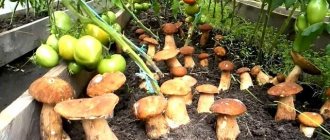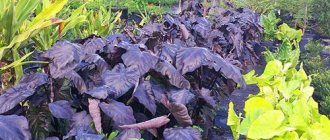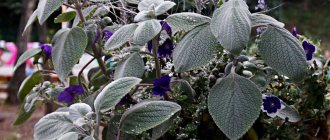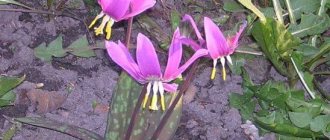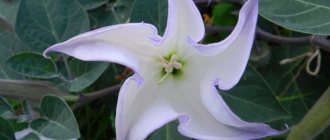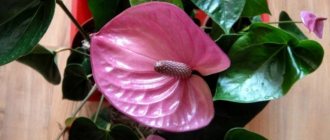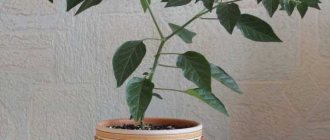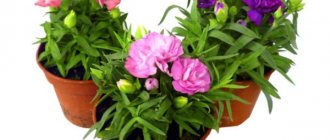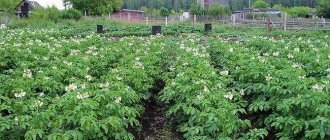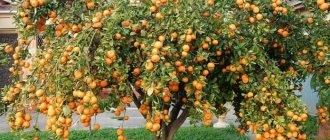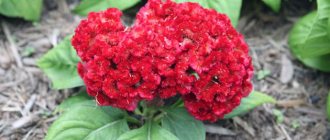Mokhoviki
A strong-looking adult mushroom, the boletus mushroom is often confused with the boletus mushroom, a relative of the Boletaceae family, a young one with the boletus mushroom, or even false boletus mushrooms are collected instead, but the edible mushroom has a significant difference, and lovers of “quiet hunting” need to know about it.
The moss fly acquired its name for its predominant habitat in mosses - in forests of temperate latitudes of both hemispheres, on ravine slopes, in the tundra, in the alpine zone, even on stumps and trunks of trees fallen from the wind. It is found under both coniferous and deciduous trees, forming mycorrhiza with spruce, pine, oak, linden, beech, and European chestnut.
Among mushroom pickers, the flywheel is considered a safe mushroom: being a tubular mushroom, which has practically no relatives dangerous to human health, excludes the possibility of mistaking it for some kind of poisonous lamellar mushroom.
Characteristic features of moss mushrooms
The flywheel has an easily recognizable cap: in young mushrooms it is round, with a light golden-chocolate hue and a soft orange tubular layer; in older specimens it is cushion-shaped or flat, cherry-brown in color, with a greenish-brown or yellow hymenophore. The surface of the cap is pleasant and velvety to the touch, sometimes cracked, and sticky in wet weather. The leg is smooth or slightly wrinkled, without rings or covering. Those mushrooms that grow in dry moss are elongated, while those growing among lush green moss clumps are short and thick.
At the point where pressure is applied to any part of the mushroom or on a cut, the flywheel develops a characteristic blue discoloration, which distinguishes it from many other mushrooms.
General information
Moss mushroom is a mushroom of the Boletaceae family . He is a relative of the well-known boletus. The green, Polish, red and variegated subspecies have the brightest taste qualities.
Each variety has its own characteristics, but there are also common characteristics, which include:
- dry and slightly velvety cap;
- As it grows, cracks may appear on the skin;
- the diameter can reach 9 centimeters.
The flesh of the mushroom is reddish, yellowish or white. At the bottom of the cap there is a hymenophore, which is a layer consisting of spore-forming cells. In the moss fly it is tubular.
A characteristic feature is that when you press the hymenophore, a bluish tint remains at the contact site.
The mushroom stem is smooth or wrinkled, which again depends on the variety. Its dimensions can reach 8 centimeters.
Types of moss mushrooms
There are 18 species in the genus Mokhovik (Xerocomus), of which only seven are found in the vast expanses of Russia.
Polish mushroom (X. badius)
Photo of Polish mushroom
It is reputed to be an excellent edible mushroom, one of the most delicious in Europe. It is quite large in size: the brownish cap sometimes reaches 12–15 cm in circumference, and the leg rises 10–13 cm. Its flesh is fleshy, with a pleasant taste and a pronounced mushroom smell, whitish or slightly creamy-yellow. The tubular layer is golden, later olive-yellowish in color, the spores are light brown. In Russia it grows more often in coniferous forests on sandy soils, and is found in the European part, the North Caucasus, Siberia and on the island of Kunashir.
For more information, read the article “Polish mushrooms.”
Good edible mushrooms are: red flywheel , green flywheel and variegated or fissured flywheel .
Red flywheel (X. rubellus)
Photo of red flywheel
A medium-sized mushroom with a deep red cap up to 8 cm in circumference, velvety-felt to the touch. It rises on a thin, up to 1 cm thick, stalk about 10 cm high, at the base with a pinkish-salmon tint. The tubular layer is dull yellow, the spores are brick brown. The species is collected only in deciduous forests, more often in oak forests of Europe and the Far East; the mushroom is also found in North Africa, but it is not called growing everywhere.
Green moss (X. subtomentosus)
Photo of green flywheel
A mushroom with an olive-brown or grayish cap up to 10 cm in diameter and a cylindrical, slightly narrowed downward, smooth stem up to 2 cm thick and 4 to 10 cm high, white flesh and a yellowish hymenophore. It grows everywhere, both in deciduous and coniferous forests, and can even be found on anthills. The distribution area is vast.
Variegated or fissured flywheel (X. chrysenteron)
Motley or fissured flywheel
A mushroom with a characteristic network of cracks on a small (3–7 cm in diameter) cap, which differs in different shades: burgundy-cherry, olive-chocolate, terracotta-red, ocher-gray. The leg, which grows up to 10 cm, has an unusual club-shaped shape. At the bottom, the leg is reddish with barely noticeable grayish-fibrous bands. The hymenophore is large-porous, creamy yellow or light olive in color, the spores are yellow-brown. Distributed everywhere: in coniferous and mixed forests on loose, acidic soil throughout Europe and the European part of Russia, the Far East and the North Caucasus.
The following types of moss fly mushrooms are classified as conditionally edible:
- blunt-spore (X. truncatus),
- chestnut (X. spadiceus),
- powdered (X. pulverulentus),
- woody (X. lignicola),
- semi-golden (X. hemichrysus).
Parasitic fly mushrooms (X. parasiticus) and astraea mushrooms (X. astraeicolus) have been identified as inedible, non-toxic mushrooms.
How to distinguish
Quite often in regions where flywheel mushrooms grow, there is a conditionally edible variety called parasitic flywheel. It often grows on the site of the warty false puffball or on the remains of this fungus.
If you accidentally take a false mushroom, you don’t need to panic right away, as it won’t cause any harm to your health, but simply has a not very pleasant taste. Doubles are much smaller than their edible counterparts. They also do not turn blue when cut and do not smell anything.
False flyworms include the following:
- Chestnut. It is characterized by a convex shape and a brownish-reddish color. The cap can reach 8 centimeters in diameter. Its color does not change after the cut. It is this variety that is often confused with the Polish flywheel. But it is also often confused with the satanic mushroom, which can pose a serious health hazard.
- The gall mushroom resembles a porcini mushroom because it has a strong and massive stalk. The mushroom cap has a spongy structure and contains a pink substance that causes a burning sensation on the tip of the tongue. In addition, the gall fungus is not interesting to insects.
- The pepper mushroom has a 7-centimeter brownish convex cap. Its pulp is yellow and very loose, but when cut it begins to turn red.
Published on March 16, 2018 by samsonmain. The entry was published in the Edible section. Bookmark the permalink.
Thin and thick pig: description of species and edibility
What autumn mushrooms are collected in September, October and after frosts
Collection period and rules
Moss fly mushrooms bear fruit en masse from July to September inclusive, however, each species has its own start and end dates for ripening. Thus, the first fissured moss mushrooms appear in the last ten days of June, and single specimens are found until the end of September, although they are collected in large quantities only from the second half of August until the tenth day of the first month of autumn.
The collection period for the Polish mushroom is from June to November; it is often found when other tubular mushrooms can no longer be found.
In Russia, green moss mushrooms red ones do not bear abundant fruit and end up in mushroom pickers’ baskets along with other moss mushrooms in August and September.
When collecting fly mushrooms, carefully monitor the appearance of blue on the cut or when pressing on the body of the mushroom - the main sign of its edibility.
False moss mushrooms and their photos
Panther fly agaric (Amanita pantherina)
Panther fly agaric (Amanita pantherina)
The caps of fly mushrooms vaguely resemble the poisonous mushroom Amanita pantherina. It is necessary to carefully examine their reverse side - the fly agaric has a tubular side, the fly agaric has a lamellar side, and the outside surface of the poisonous mushroom cap is distinguished by small white flakes that easily fall off.
Parasitic flywheel (X. parasiticus)
Parasitic flywheel (X. parasiticus)
It is easy to confuse it with young green flywheels if you do not know its growing conditions. The parasitic mushroom is small in size - the cap is up to 5 cm in diameter, lives on the body of the false puffball and is extremely rare. In addition, it has no characteristic blue discoloration on the cut and an inexpressive smell and taste. Although it is considered non-poisonous, not a single mushroom picker will put it in a basket.
Pepper mushroom (Chalciporus piperatus)
Pepper mushroom (Chalciporus piperatus)
The poisonous pepper mushroom (Chalciporus piperatus) is similar to the red flywheel, having a cherry-reddish tint of the stem and tubular layer. When cut, both the cap and the stem turn pink in contrast to the mossy blue.
Gall mushroom (Tylopilus felleus)
Bile mushroom
They are more often confused with young boletus mushrooms and boletus mushrooms than with mossy mushrooms, but there is still a chance of getting into the company of mossy mushrooms. Although the gall mushroom is not poisonous, its bitter taste that appears during heat treatment will spoil any mushroom dish.
Chestnut mushroom (Gyroporus castaneus)
Chestnut mushroom (Gyroporus castaneus)
The variegated flywheel also has an inedible counterpart - the chestnut mushroom, or chestnut gyroporus (Gyroporus castaneus) with the same brownish cap, which changes shades during the ripening process and in dry weather is covered with a fine network of cracks. It is distinguished by a hollow brownish stem and does not change color when cut, which cannot be said about its relative, the blue gyroporus (G. cyanescens), which is less similar to the moss fly due to its grayish-brown or brownish-yellow cap. Both mushrooms are inedible and are very bitter in dishes.
Brown (Polish)
The diameter of its cap reaches twenty centimeters . It has a brown color. The shape of the leg is cylindrical, its size is up to fifteen centimeters. The pulp of the Polish mochovich has a mushroom or even fruity aroma.
The Polish variety is considered very popular. It is used salted, dried, frozen, and fresh.
Useful properties and contraindications
Mushrooms contain many healthy substances: enzymes that promote food digestion; natural sugars, thanks to which dishes made from them are considered low-calorie and suitable for dietary nutrition; vitamins PP, D and B; microelements, including molybdenum and calcium, in terms of the content of which flywheels occupy a leading position among mushrooms.
Fly mushrooms do not produce any harmful effects on the body. Most mushrooms are perceived by the stomach as heavy food, so people with chronic diseases of the liver and gastrointestinal tract are advised to refrain from eating mushroom dishes in large quantities. However, fly mushrooms do not create such a pronounced heaviness effect on the stomach as other mushrooms. Still, you should not offer them to children under 3 years of age and, of course, to those who are allergic to mushrooms.
Cooking recipes
Moss fly salad
After a “quiet hunt,” a novice mushroom picker has a problem: how to cook moss mushrooms appetizingly, despite their mediocre taste declared in all culinary reference books?
The main thing is to remember an important thing - flywheels immediately begin to darken from interaction with air, so fresh peeled mushrooms are immediately immersed in water, adding 2 g of citric acid and a teaspoon of salt per 1 liter.
When pickled and pickled, mushrooms are excellent preparations for the winter, but they are extremely rarely used for drying - due to the same characteristic darkening. To prepare dishes from moss mushrooms, both caps and legs are used. Moss mushrooms do not need to be pre-boiled before frying or adding to soups, and the Polish mushroom is also eaten raw as the main accent of salads. The “Awesome” salad is incredibly tasty, although the moss mushrooms used for it are still pickled.
Salad with Polish mushroom
Main ingredients:
- mushrooms – 0.5 l jar,
- processed cheese – 100 g,
- boiled potatoes – 5–6 pieces,
- pickled cucumber – 2-3 pieces,
- mayonnaise for dressing,
- greens to taste.
Experienced cooks recommend using cucumbers for this salad from a marinade with citric acid rather than vinegar. All components of the dish are crushed, mixed and seasoned with mayonnaise, and greens are added at your discretion.
Moss mushrooms for this salad, and for many other dishes, are prepared for the winter as follows:
Marinated moss mushrooms
Mushrooms are cleaned and thoroughly washed, damaged ones and those that are too large are sorted out, leaving caps no more than 5–6 cm in circumference.
Place in a saucepan, add water and bring to a boil, then boil for 10–15 minutes over low heat and drain the contents into a colander. Allow the water to drain while preparing the marinade. Add 1 tablespoon of salt and sugar to 1 liter of water, add 2 small bay leaves, a few cloves of garlic and just a little cloves. After boiling, pour 1 tbsp. a spoonful of vinegar and transfer the mushrooms to the pan. Boil in the marinade for 5 minutes, then place in sterilized glass containers so that the liquid covers the entire contents, and roll up.
Moss mushrooms make delicious soups, stewed or fried side dishes, and baked in sour cream they can easily claim to be an exquisite culinary masterpiece.
